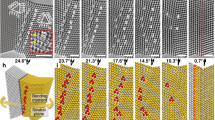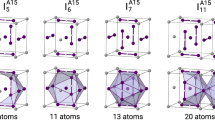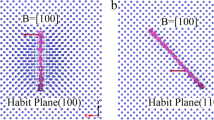Abstract
RECENTLY, several studies of dislocations in face-centred cubic metals by the method of transmission electron microscopy have been reported. Of the body-centred cubic metals, however, only iron has so far received attention1,2. In this letter we give a preliminary account of some experiments on dislocation movements during deformation and recovery processes in molybdenum.
This is a preview of subscription content, access via your institution
Access options
Subscribe to this journal
Receive 51 print issues and online access
$199.00 per year
only $3.90 per issue
Buy this article
- Purchase on Springer Link
- Instant access to full article PDF
Prices may be subject to local taxes which are calculated during checkout
Similar content being viewed by others
References
D. G. Brandum and J. Nutting, Acta Met., 7 101 (1959)
D. Mc Lean, reported by N. P. Allen, J. Iron and Steel Inst., 191, (1959)
W. Pollman, Phys. Rev., 103, 1588 (1956)
Author information
Authors and Affiliations
Rights and permissions
About this article
Cite this article
KERRIDGE, J., JOHNSON, A. & MATTHEWS, H. Dislocation Arrangements in Molybdenum. Nature 184, 356–357 (1959). https://doi.org/10.1038/184356a0
Issue Date:
DOI: https://doi.org/10.1038/184356a0
Comments
By submitting a comment you agree to abide by our Terms and Community Guidelines. If you find something abusive or that does not comply with our terms or guidelines please flag it as inappropriate.



